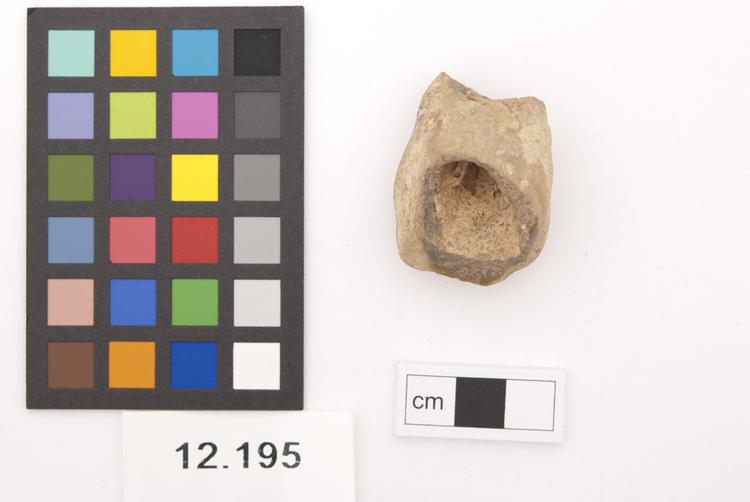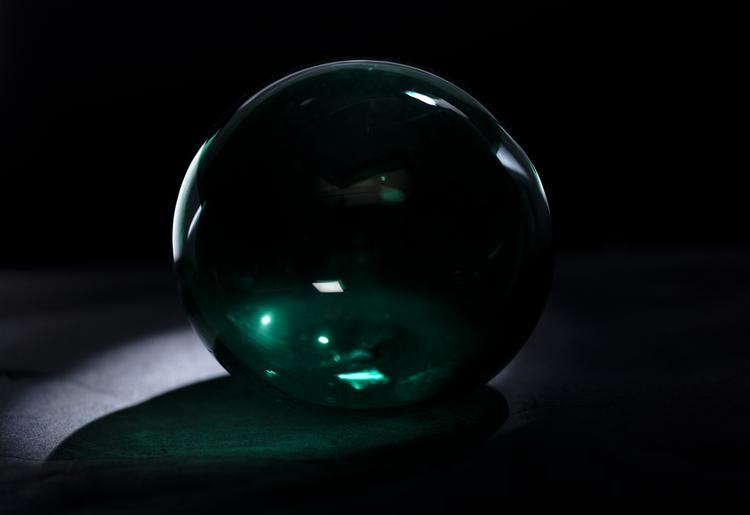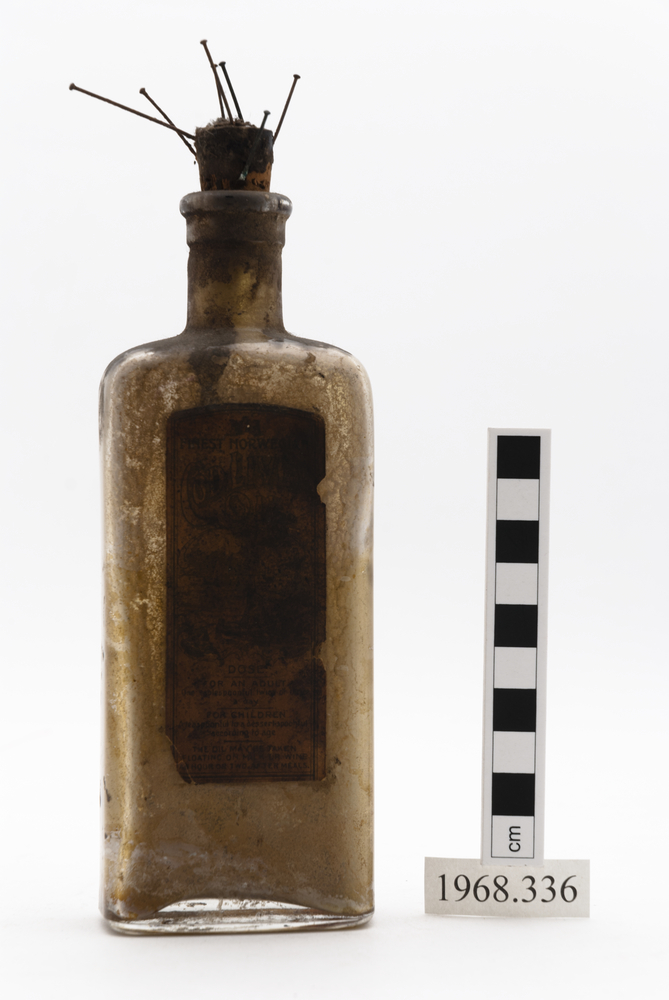The Horniman holds a large and interesting number of English charms in its collection. Most of these were collected and donated by two men named Edward Lovett and Alfred William Rowlett.
Hag stone
Have you ever seen a stone with a hole in the centre? These naturally occurring stones are thought to allow the holder to see witches. They are called hag stones, or adder stones and are normally found near the sea.
Simply hold the stone up to your eye, look through the hole, and you will be able to see if the person standing in front of you is a witch.
There are many other stories associated with these stones. In Hastings there is a local legend that the town is under an enchantment set by (description) Aleister Crowley. No matter where you move to or how long you are away, you will always return to the town. The curse can be broken however by carrying a hag stone from Hastings beach with you wherever you go.

Witch stick
This witch stick is made of glass and decorated with red, white and blue bands. Sticks like this one were placed between the bed and fireplace to absorb evil spirits that caused disease, particularly malaria.
Each morning they are then cleaned of the evil spirits they have absorbed. Breaking a witch stick is considered very bad luck.
It was thought that the spiral pattern of the coloured bands would confuse evil spirits and trap them.
These sticks were produced from the mid-18th to the mid-19th century. Most of the charms in our collection are found objects that magical powers were then attributed to. However the witch sticks were specifically produced for the purpose of absorbing evil spirits. They were produced by Nailsea Glassworks in Somerset.

witch cane; walking stick
Anthropology
Witch ball
Another glass charm, witch balls were hung in cottage windows to ward off evil spirits and ill fortune.
Predominately used in East and West Sussex, the balls are hollow spheres of glass, usually with a hole at one end.
The witch balls were placed in east-facing windows or even hung from rafters using a cord. The tradition was particularly common in the homes of European sailors.
One idea behind the witch balls was that evil spirits or witches would be entranced by the light reflecting and refracting through the bottle. The strands within the bottle would then entrap them. Another theory was that because witches did not have reflections they would stay away from the reflective surface of the glass.

Witch bottle
Witch bottles, such as the one in our collection, were jugs or bottles that would have been prepared by a cunning person, or a white witch. Rather than preventing witches, these bottles were cures, prescribed when a person had already been cursed.
The bottle would contain the victim’s urine, hair or nail clippings – in a sense, their essence.
The bottle is then stoppered, often with nails or needles stuck in the top, and tucked away in the furthest corner of the property. It was thought that evil would then be skewered on the sharp top of the bottle, and the witch who had cast the spell would, through reverse magic, be unable to pass water and either lift the spell or die, breaking the spell.



